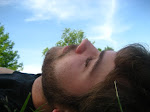During my listening presentation we heard some old dance forms from the Baroque and Renaissance. It would be important to know which forms are which, for they each have their own meters, tempi, and affects. Many of us are familiar with the Baroque forms like the sarabande or the gigue, but what about the stylized dances of the Renaissance? Both eras today.
Renaissance:Bassadance - slow, stately dance, in a combination of 6/4 and 3/2 time (allowing for hemiola).
Pavane - slow processional dance, duple meter.
Allemande - duple meter and moderate tempo. Grave and ceremonious.
Galliarde - lively dance in 6/4. The dance itself is characterized by leaps and hops.
Courante - lively dance in 3/2 or 6/4. Courante literaly means 'running.'
Canario - fast in tempo, in 3/8 or 6/8. Named after the Canary Islands from the dance's origin.
Baroque:Bouree - quick dance, duple meter. The Bouree starts on the last beat of the bar, giving the music an off-set feel for performers.
Gavotte - 4/4 or 2/2, moderate tempo. Phrases begin in the middle of the bar (instead of the last beat like the Bouree).
Gigue - lively dance in compound meter, originating from the English jig.
Minuet - in 3/4 time. Style and tempo may vary.
Passapied - fast tempo, triple meter. Phrases begin on the upbeat to the bar.
Rigaudon - a lively folk dance for couples in duple meter, uses hopping steps.
Sarabande - slow, serious dance in triple meter.
Additional style terms:Passamezzo - not actually a dance per se, but a particular chord progression used in Renaissance music. There are two 'passamezzo' chord progressions, one
antico (i-VII-i-V) and one
moderno (I-IV-I-V).
Scherzo - thought I'd throw this one in here. This style began as Beethoven's version of the Classical minuet. Fast triple meter, often energetic, comedic, or rambunctious.







